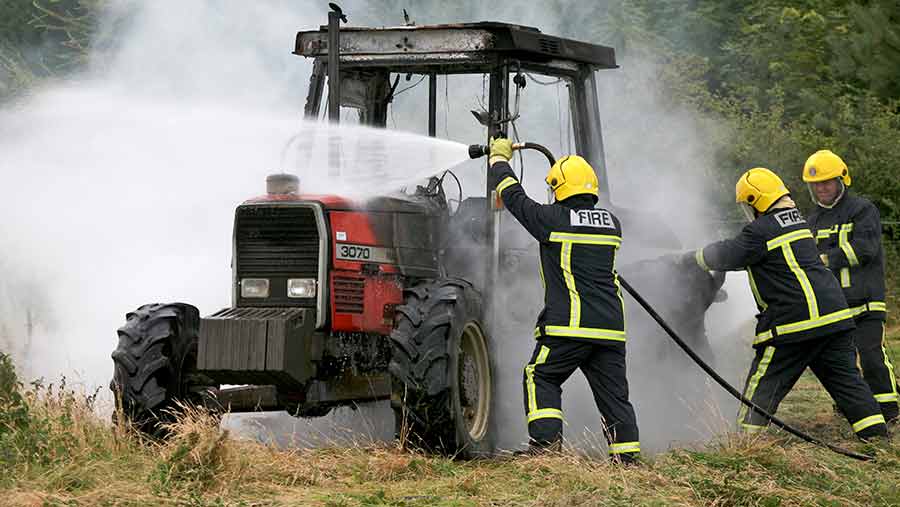Farm insurer counts cost of 14% rise in fires
 © Tim Scrivener
© Tim Scrivener Farm fires cost the UK agriculture industry nearly £50m in insurance claims in 2015, according to NFU Mutual.
The rural insurer said it paid out £47.9m in farm fire claims in 2015 – a 14% increase on the previous year.
The south of England and East Anglia were the worst-affected regions in 2015, followed by north-east England and the North West.
See also: Guide to preventing fire in poultry sheds
Electrical faults were the most common causes of farm fires. Arson and mechanical faults were also cited as major causes.
“Fire remains one of the greatest hazards to the lives of farmers and with claims peaking in August and September, it’s important to be alert to the risks and have plans prepared and shared with family members and staff,” said NFU Mutual rural affairs specialist Tim Price.
“The scale of these claims shows how important it is to take all possible steps to prevent fires breaking out, and to have clear plans to evacuate people and livestock safely in the event of a fire.
“Also, it’s vital to make sure you have the right sort of fire extinguishers, maintained in good order, so you can fight small fires safely.”
Last week, a report published by Scottish Fire and Rescue Service and NFU Scotland showed there were 343 fires on farmland in Scotland between 1 April 2015 and 31 March 2016.
Farmers have been urged to check their fire prevention and evacuation procedures.
NFU Mutual farm fire checklist
- Ensure there are enough fire extinguishers for the size of buildings and that materials stored are inspected and regularly maintained
- Ensure staff and adult family members know the location of fire extinguishers and how to use them
- Reduce the risk of arson by fencing off straw stacks and farm buildings
- Store hay and straw at least 10m from other buildings
- Set up an evacuation plan for staff and livestock
- Store petrol, diesel and other fuels in secure areas
- Schedule regular electrical safety checks
- Invite your local fire and rescue service to visit to check water supplies and access routes
